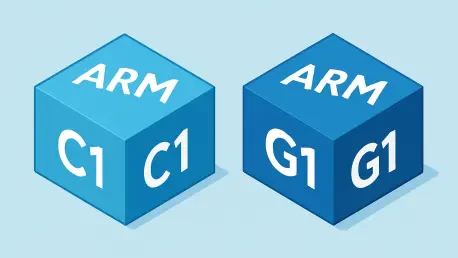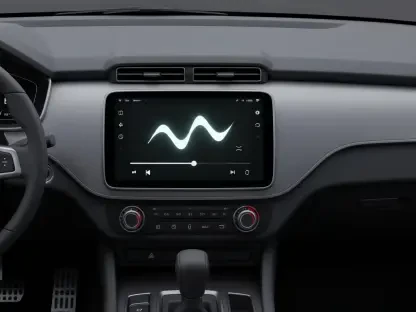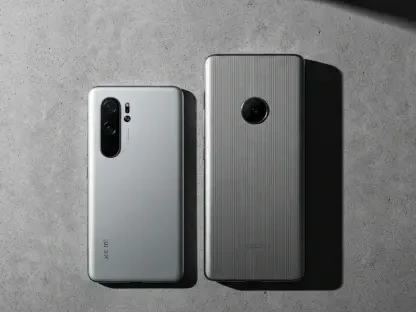Imagine a world where your smartphone not only runs the most demanding games with breathtaking visuals but also processes complex AI tasks in the blink of an eye, all while sipping power to last through the day. This isn’t a distant dream but a reality shaping up with ARM’s latest innovations in semiconductor design. The introduction of the C1 CPU and G1 GPU cores marks a transformative leap in mobile technology, promising to redefine performance standards across devices. This review delves into the intricacies of these cutting-edge components, exploring their features, real-world impact, and the strategic vision behind ARM’s approach to modern computing challenges.
Unpacking the Technological Breakthrough
C1 CPU: Power and Precision Redefined
The C1 CPU cores, built on the ARMv9.3 architecture, represent a significant evolution in processing power for mobile devices. With performance tiers such as C1-Ultra for flagship models, C1-Premium for sub-flagship designs, C1-Pro for mid-range needs, and C1-Nano for efficiency-focused applications, these cores cater to a wide spectrum of market demands. A standout improvement is the 25% boost in single-threaded performance in the C1-Ultra compared to previous generations, achieved through enhanced Instructions Per Cycle (IPC). Additionally, power efficiency gains, especially in the C1-Nano with up to 26% savings, ensure that devices can deliver more while consuming less.
Another key aspect of the C1 lineup is the flexibility in cluster configurations, allowing chipset designers to mix up to three core types in clusters ranging from 1 to 14 cores. This adaptability is supported by the C1-DynamIQ Shared Unit (DSU), which optimizes power management and L3 cache sharing, contributing to an impressive 30% performance uplift in benchmarks. Such advancements highlight ARM’s commitment to balancing raw power with sustainable energy use, addressing the needs of both high-end and budget-conscious consumers.
AI Capabilities with Scalable Matrix Extension 2
A defining feature of the C1 cores is the integration of Scalable Matrix Extension 2 (SME2), which propels AI performance to new heights. This technology delivers up to 4.7x faster processing for models like Whisper Base in speech-to-text tasks and Google’s Gemma 3 in generative AI applications. The impact is profound for developers, as SME2 seamlessly integrates with major AI frameworks from industry giants, ensuring that harnessing these gains requires minimal adaptation.
This focus on AI acceleration positions the C1 cores as pivotal tools in the era of smart devices, where on-device machine learning is becoming central to user experiences. From voice assistants to real-time language processing, the ability to handle intensive AI workloads locally enhances privacy and responsiveness, setting a new benchmark for what mobile hardware can achieve in intelligent computing.
Mali G1-Ultra GPU: Gaming and Beyond
Complementing the CPU advancements, the Mali G1-Ultra GPU introduces groundbreaking features for mobile graphics, particularly with its second-generation Ray Tracing Unit (RTUv2). This unit doubles ray tracing performance, resulting in a 40% higher frame rate in supported games, creating more immersive visual experiences. Beyond ray tracing, the GPU offers a 20% increase in raster performance and a 9% improvement in power efficiency across leading benchmarks.
Specific game titles showcase these gains vividly, with frame rate boosts of 25% in Arena Breakout and 19% in Honkai Star Rail. The G1-Ultra also supports Accuracy Super Resolution (ASR), a temporal upscaling technology akin to advanced desktop solutions, already integrated into engines like Unreal Engine 5. With configurations ranging from 1 to 24 shader cores, this GPU is poised to elevate mobile gaming, a sector where over 83% of gamers play on portable devices.
Strategic Vision and Market Alignment
ARM’s decision to retire the traditional “Cortex” branding in favor of streamlined names like C1 for CPUs and segment-specific identifiers such as Lumex for mobile platforms reflects a deliberate strategy to simplify product recognition. This rebranding extends to other markets with names like Niva for PCs and Zena for automotive applications, tailoring solutions to distinct industry needs. Such clarity aids manufacturers and consumers alike in identifying the right technology for specific use cases.
The introduction of new tiers like C1-Premium further underscores ARM’s intent to address nuanced market segments, offering a balance of performance and cost for sub-flagship devices. This strategic positioning ensures that ARM remains competitive across diverse price points, from premium smartphones to more accessible models, reinforcing its dominance in the semiconductor space with adaptable and forward-thinking designs.
Real-World Impact Across Industries
The practical implications of the C1 and G1 cores are vast, particularly in the mobile sector where gaming and AI-driven functionalities are paramount. Enhanced frame rates and ray tracing capabilities cater directly to the massive mobile gaming audience, delivering console-quality experiences on handheld devices. Meanwhile, AI performance boosts enable smarter applications, from real-time translation to personalized content recommendations, enhancing everyday interactions.
Beyond gaming and AI, the flexible design of these cores allows integration into a range of devices, ensuring that both flagship and budget models benefit from cutting-edge technology. This scalability means that manufacturers can tailor hardware to specific consumer needs without sacrificing innovation, potentially reshaping how performance is democratized across price tiers in the coming years.
Challenges in Adoption and Integration
Despite the promising advancements, the adoption of C1 and G1 cores faces hurdles, primarily due to the absence of consumer devices currently featuring these technologies. Manufacturers must navigate integration complexities to fully leverage the new architectures, which may slow initial rollout in the market. Additionally, developers need time to adapt to updated frameworks and optimize software for these cores.
ARM is actively addressing these challenges through rapid deployment strategies and partnerships with industry leaders to streamline ecosystem support. Collaborative efforts ensure that hardware and software alignment progresses smoothly, mitigating potential delays and fostering quicker market penetration for these innovative components.
Looking Ahead: Industry Transformation
The trajectory for C1 and G1 cores suggests a near-term rollout in consumer products, with expectations of widespread integration across mobile devices. Future advancements in AI processing and gaming graphics are likely to build on these foundations, further enhancing performance while maintaining power efficiency. This could solidify ARM’s leadership in mobile computing and expand its influence in adjacent sectors like automotive and personal computing.
Long-term implications point toward a redefined landscape where mobile hardware handles increasingly complex tasks with ease. As ARM continues to innovate, the focus on segment-specific solutions and customizable designs will likely drive tailored technological progress, ensuring relevance across evolving industry demands from 2025 onward.
Final Thoughts and Next Steps
Reflecting on this comprehensive evaluation, the rollout of ARM’s C1 CPU and G1 GPU cores stands as a monumental step in mobile technology, delivering remarkable performance uplifts and efficiency gains. The strategic rebranding and focus on AI and gaming have positioned ARM as a leader in addressing contemporary computing needs. Moving forward, stakeholders should prioritize close collaboration with ARM to accelerate device integration, ensuring that consumers experience these advancements sooner. Manufacturers and developers alike need to invest in optimizing for these cores, paving the way for a new standard in mobile performance and setting the stage for even greater innovations in the years that follow.









